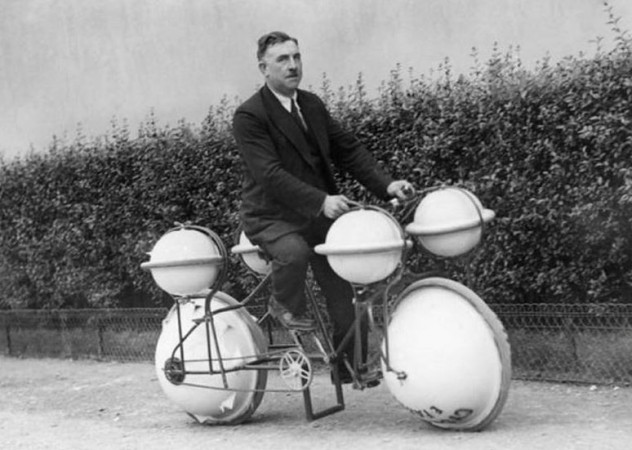
Innovation has been a driving force behind human progress throughout history. Over the years, countless inventions have shaped the world we live in today. While some inventions have become iconic and widely recognized, others have been forgotten or overshadowed by newer technologies. However, these forgotten inventions still hold valuable lessons and have found unexpected applications in our modern world. In this article, we will explore some of these forgotten inventions and discover their relevance and impact in today's society.
1. Introduction
In this fast-paced world of technological advancements, it's easy to forget the past and the inventions that paved the way for our present. However, many forgotten inventions hold remarkable potential even in today's context. Let's explore some of these inventions and how they are finding new applications in the modern world.
2. The Forgotten Invention: Antikythera Mechanism
The Antikythera Mechanism, an ancient Greek analog computer, was discovered in 1901. It was used to track celestial movements and predict astronomical events. This intricate device, built over two thousand years ago, showcases the remarkable engineering skills of its time.
3. Modern Applications: Complex Machinery and Precision Engineering
The Antikythera Mechanism serves as a testament to the complexity and precision achievable by ancient civilizations. Its gears and intricate mechanisms inspire modern-day engineers in the development of complex machinery and precision instruments used in fields such as aerospace, robotics, and manufacturing.
4. The Forgotten Invention: Aerotrain
In the 1960s, the Aerotrain was introduced as a revolutionary high-speed transportation system. It utilized air-cushion technology to glide above the tracks, promising faster and smoother travel compared to traditional trains.
5. Modern Applications: High-Speed Transportation
Although the Aerotrain did not achieve widespread adoption, its concept influenced the development of modern high-speed trains, such as maglev trains. These trains utilize magnetic levitation technology to reduce friction and increase speed, providing efficient and comfortable transportation options.
6. The Forgotten Invention: Odoroscope
The Odoroscope, invented in the early 1900s, was a device that emitted scents corresponding to specific moments in a film. It aimed to enhance the movie-watching experience by engaging multiple senses simultaneously.
7. Modern Applications: Aromatherapy and Sensory Marketing
While the Odoroscope itself did not gain popularity, its concept aligns with the modern practices of aromatherapy and sensory marketing. Aromatherapy utilizes scents to promote well-being and relaxation, while sensory marketing uses scents to create memorable experiences and evoke emotions in retail environments.
8. The Forgotten Invention: Photochromic Lenses
Photochromic lenses, first developed in the 1960s, were designed to darken in response to UV light exposure, providing protection from the sun's harmful rays. These lenses were a significant advancement in eyewear technology.
9. Modern Applications: Transition Lenses and Smart Glasses
The concept of photochromic lenses lives on in modern eyewear technology. Transition lenses, widely used today, automatically adjust their tint based on UV light levels. Furthermore, smart glasses incorporate photochromic capabilities along with augmented reality features, revolutionizing the way we perceive and interact with the world.
10. The Forgotten Invention: Pyrophone
The Pyrophone, also known as the fire organ, was an instrument that produced musical tones by using controlled flames. It captivated audiences with its unique sound and visual spectacle.
11. Modern Applications: Musical Instrument Innovation
While the Pyrophone may not be commonly seen today, its influence on musical instrument innovation can still be felt. Contemporary artists and instrument makers draw inspiration from its principles, pushing boundaries to create new and unconventional musical experiences.
12. The Forgotten Invention: Radiomobile
The Radiomobile, introduced in the early 1930s, was one of the earliest portable car radios. It allowed drivers to enjoy music and news while on the road, transforming the driving experience.
13. Modern Applications: Portable Communication Devices
The Radiomobile can be seen as an early predecessor to portable communication devices that we rely on today, such as smartphones and car entertainment systems. It laid the foundation for the integration of technology and convenience in our daily lives.
14. The Forgotten Invention: Water Fuel Cell
The Water Fuel Cell, invented by Stanley Meyer in the late 1980s, claimed to generate hydrogen gas from water through a process known as electrolysis. This invention had the potential to revolutionize the energy industry with its clean and renewable fuel source.
15. Modern Applications: Sustainable Energy Solutions
While the specific claims made about the Water Fuel Cell remain controversial, the pursuit of sustainable energy solutions is more relevant than ever. Scientists and engineers continue to explore new ways of harnessing clean energy sources, driving advancements in solar, wind, and hydrogen technologies.
16. Conclusion
The history of inventions is a rich tapestry of human ingenuity. While some inventions fade into obscurity, their influence often lingers on, shaping the present and inspiring future innovations. By revisiting forgotten inventions, we can uncover valuable lessons, find new applications, and appreciate the remarkable achievements of our ancestors.
Celebrating the Phenomenal Journey of Sourav Ganguly: A Cricketing Legend and Inspirational Leader
BREAKING! Manipur violence, Mob sets two vehicles on fire
Rahul Gandhi Demonstrates Solidarity with Farmers by Riding a Tractor in Sonipat